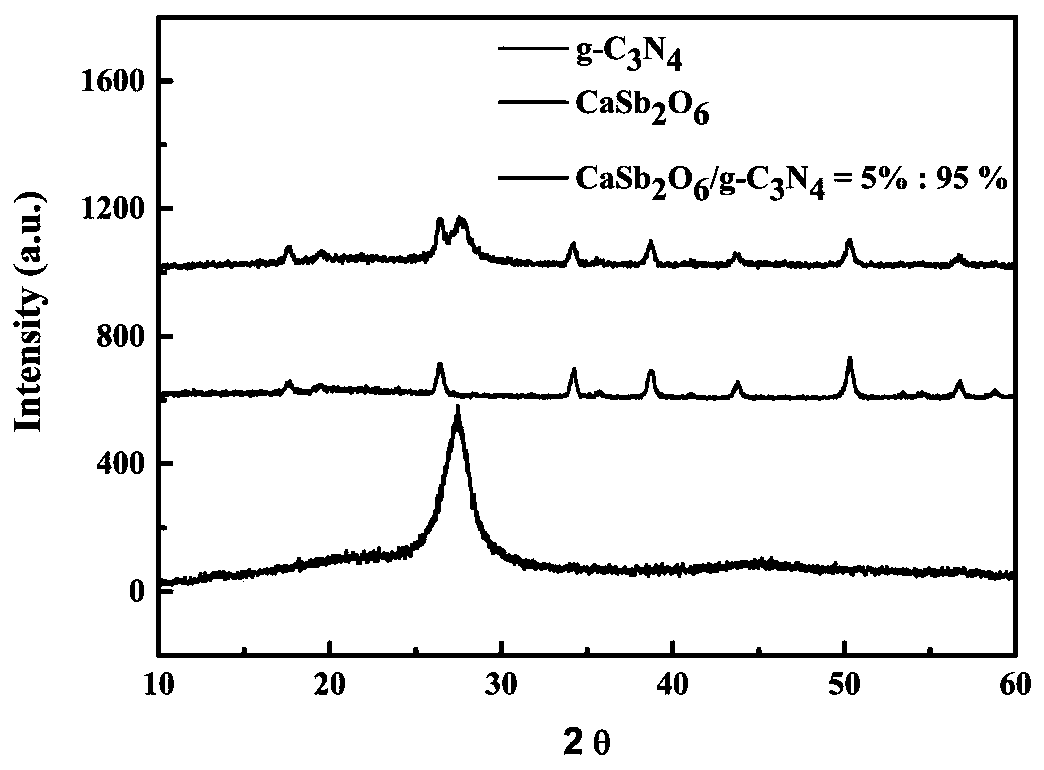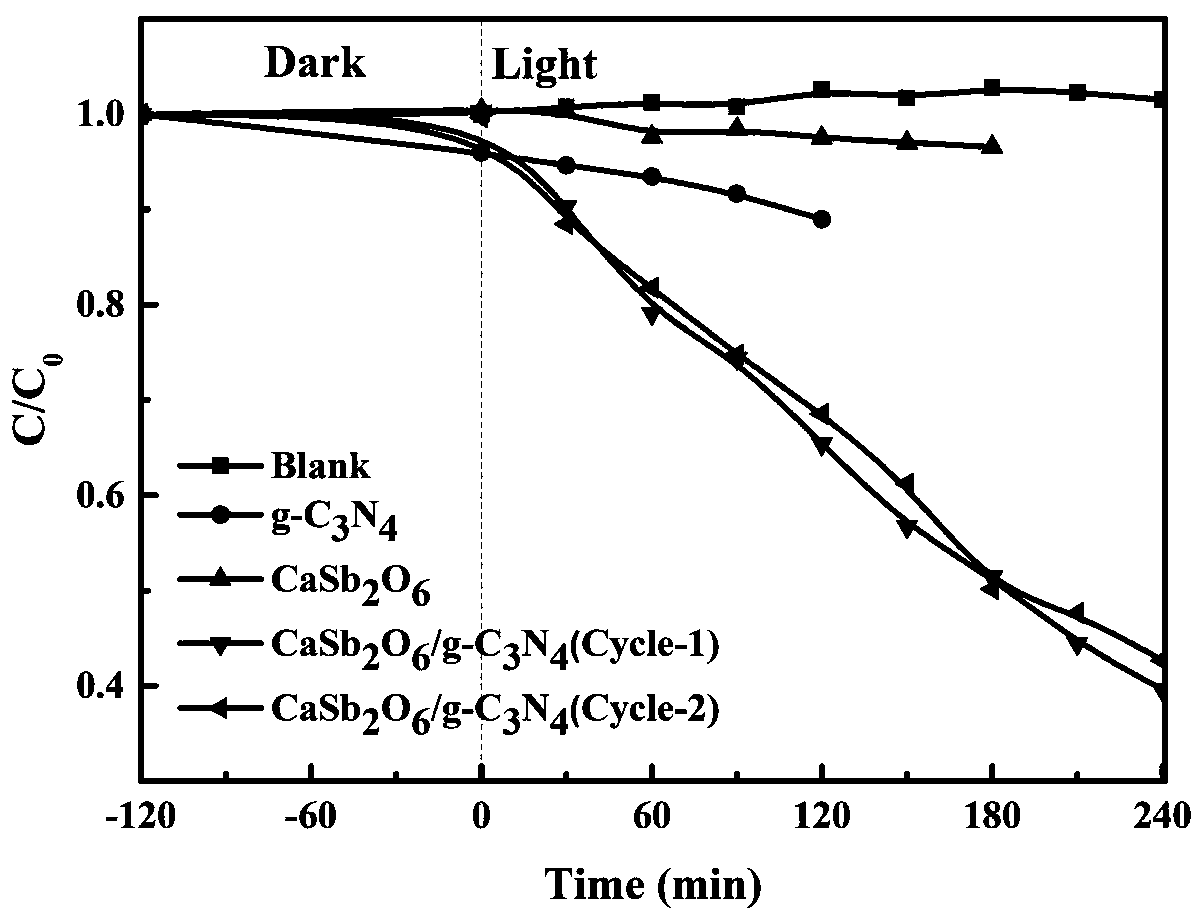Preparation method and application of heterojunction photocatalyst CaSb2O6/g-C3N4
A photocatalyst, g-c3n4 technology, applied in the field of environmental protection and pollutant degradation, can solve the problems of low quantum efficiency, poor visible light absorption, limited photocatalysis development, etc., to achieve stable catalytic properties, conducive to environmental protection treatment, good catalysis The effect of degradation
- Summary
- Abstract
- Description
- Claims
- Application Information
AI Technical Summary
Problems solved by technology
Method used
Image
Examples
Embodiment 1
[0037] Embodiment 1 solid-phase method prepares CaSb 2 o 6 / g -C 3 N 4 Heterojunction.
[0038] The preparation process is as follows:
[0039] 1) Weigh 1mmol CaCO respectively 3 , 1.05 mmol Sb 2 o 3 After mixing and grinding for 30 minutes, transfer to a corundum crucible;
[0040] 2) Put the corundum crucible into a high-temperature muffle furnace, sinter at 870°C for 10 hours, and after natural cooling, finally produce CaSb 2 o 6 Precursor;
[0041] 3) Weigh 1g of melamine and mix it evenly, transfer it to a corundum crucible, put the corundum crucible into a muffle furnace, and sinter at 560°C for 2 hours at a heating rate of 4°C / min, and then naturally cool down to obtain g-C 3 N 4 Precursor;
[0042] 4) The prepared g-C 3 N 4 Dilute HNO with 0.1mol / L 3 Wash, stir, then wash with absolute ethanol, finally wash with water, and dry;
[0043] 5) According to the precursor CaSb 2 o 6 , g-C 3 N 4 Mix with absolute ethanol at a mass ratio of 1:19:30 and grin...
PUM
 Login to View More
Login to View More Abstract
Description
Claims
Application Information
 Login to View More
Login to View More - R&D
- Intellectual Property
- Life Sciences
- Materials
- Tech Scout
- Unparalleled Data Quality
- Higher Quality Content
- 60% Fewer Hallucinations
Browse by: Latest US Patents, China's latest patents, Technical Efficacy Thesaurus, Application Domain, Technology Topic, Popular Technical Reports.
© 2025 PatSnap. All rights reserved.Legal|Privacy policy|Modern Slavery Act Transparency Statement|Sitemap|About US| Contact US: help@patsnap.com



